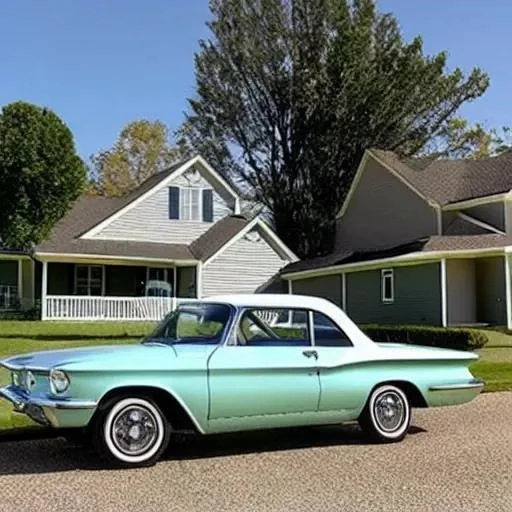
In an era dominated by conventional front-engine giants‚ Chevrolet‚ an automotive titan‚ dared to challenge the status quo․ The pursuit of revolutionary design and engineering often leads down unconventional paths‚ and for Chevy‚ one such audacious journey involved a fascinating experiment: the rear-engine car․ This bold departure from American automotive norms wasn’t merely a fleeting concept; it blossomed into an icon that‚ despite its tumultuous history‚ continues to captivate enthusiasts and historians alike․ We delve into the compelling narrative of this innovative vehicle‚ unearthing the profound impact it exerted on both design philosophy and consumer expectations․
At the heart of this groundbreaking initiative stood the legendary Chevrolet Corvair․ Launched in 1960‚ the Corvair was conceived under the visionary guidance of Chief Engineer Ed Cole‚ who in 1955 tasked Maurice Olley with exploring diverse engine-drivetrain configurations for a compact car․ Rejecting the prevalent front-engine paradigm‚ the decision was made to embrace a rear-mounted‚ air-cooled‚ flat-six engine․ This ingenious choice promised not only superior traction and a remarkably smoother ride but also aimed for an ideal 40% front‚ 60% rear weight distribution‚ enhancing the car’s stability platform․ Crafted with an all-aluminum engine to minimize weight‚ the Corvair truly represented a radical leap‚ positioning Chevrolet as a pioneer in domestic rear-engine vehicle production‚ years before even the Porsche 911 made its debut․
| Category | Details |
|---|---|
| Vehicle Name | Chevrolet Corvair |
| Production Years | 1960 – 1969 (Two Generations) |
| Engine Type | Rear-mounted‚ air-cooled‚ flat-six (Turbo-Air 6) |
| Key Innovations |
|
| Body Styles | Sedan‚ Coupe‚ Convertible‚ Station Wagon‚ Van (Corvair 95)‚ Pickup (Corvair 95) |
| Legacy & Impact | Pioneering American rear-engine compact car; sparked significant debate on auto safety; influential in compact car design; now a sought-after classic․ |
| Official Reference | Chevrolet Official Website (for brand history and current models) |
However‚ no truly pioneering innovation is without its trials․ The Corvair’s unconventional design‚ particularly its early swing-axle rear suspension‚ became the subject of intense scrutiny‚ famously highlighted in Ralph Nader’s seminal work‚ “Unsafe at Any Speed․” While this period presented significant challenges for Chevrolet‚ it ultimately catalyzed a monumental shift in automotive safety standards across the entire industry․ By courageously addressing these critiques‚ even amidst a firestorm of public debate‚ Chevrolet demonstrated a remarkable commitment to refinement‚ evolving the Corvair with fully independent suspension in later models․ This resilience underscores a powerful lesson: progress often emerges from confronting adversity head-on‚ transforming obstacles into stepping stones for future advancement․
Beyond the controversies‚ the Corvair carved out an indelible niche in automotive lore; Its sleek‚ European-inspired styling and spirited performance offered American drivers a unique alternative to the prevailing automotive landscape․ Owners cherished its distinct character and the engaging driving experience provided by its rear-engine layout․ Today‚ far from being relegated to a mere footnote‚ the Corvair is celebrated as a cult classic‚ a testament to its enduring charm and groundbreaking engineering․ Enthusiasts actively seek out these quirky‚ stylish vehicles‚ appreciating their historical significance and the sheer audacity of their original design‚ a true symbol of rebellion and innovation․
The story of Chevrolet’s rear-engine car‚ predominantly embodied by the Corvair‚ is a vivid reminder of the power of innovation and the courage to deviate from the norm․ It’s a narrative woven with threads of bold engineering‚ public debate‚ and unwavering passion․ Looking forward‚ the spirit of the Corvair continues to inspire‚ reminding us that pushing boundaries‚ even when fraught with challenges‚ is essential for progress․ Chevrolet’s willingness to experiment with the rear-engine configuration not only produced a memorable vehicle but also significantly contributed to the rich tapestry of American automotive history‚ leaving an optimistic legacy of audacious design and relentless pursuit of engineering excellence․
